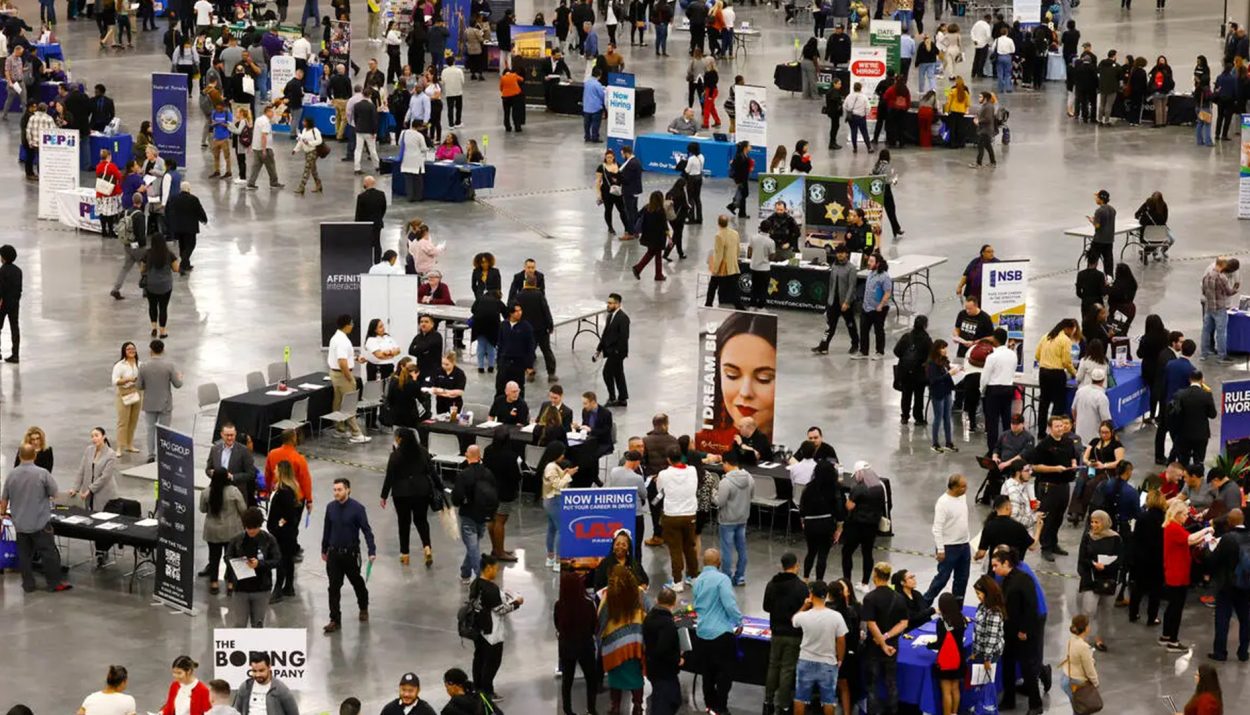Wage growth is how much people’s daily or weekly earnings increase while adjusted for inflation. The rate was abysmal during the pandemic as the economy suffered the crisis, and while things got better over time, data shows it’s falling again.
This was discovered by Indeed, a famous job site. They revealed that salaries had dropped to 3.3% in February compared to 2023. How is this a significant drop? Which sector got hit the hardest? Read on for these answers and more!
A Significant Drop In Wage Growth
The wage tracker revealed that salaries were at a 3.3% growth rate in February. This comparison was between the years 2024 and 2023. However, when the percentage was compared with 2022, there was a huge difference.

Merely two years ago, the wage growth was at 9.3%, which was impressive since the economy was recovering from Covid. So what caused this steep drop in just two years? Lack of competition.
Employers Are Facing Less Competition For New Hires
There’s a strong possibility that the declining wage rate is due to employers facing less competition for new hires. What does that mean? Essentially, few companies are desperately trying to hire people applying for the open positions.

This decreased opportunity allows employers to be more frugal with their wages. It’s a way to manage the supply of job seekers compared to the amount of actual jobs. But why are there suddenly fewer jobs now?
There Are Fewer Job Opportunities Now
The pandemic caused several businesses to close up. The few that managed to stay open fired most of their workforce to stay afloat. When the pandemic ended, jobs were open, and companies were hiring again.

And ss time progresses and more people get hired, there will be fewer spots open. So, one can argue that this decrease in wages is natural.
Low-Wage Sectors Are The Most Affected
It’s worth pointing out that the steep wage drop affects all sectors. But the issue is more pronounced in the low-wage sector. How bad is it? That group experienced a pay drop from 12.4% to 3.4%.

That decline is significant and scary. Even the labor economist for Indeed, Nick Bunker, commented on the situation. He said: “Given the huge run-up in posted wages for those sectors, wage growth is still above its pre-pandemic pace. How long this will last is uncertain.”
What About Middle-Wage Workers?
The steep decline for the low-end jobs has scared economists, but what about the middle-wage opportunities? While low, the drop isn’t too steep when comparing 2024 and 2022.

The year-over-year growth for middle-wage workers dropped from 8.5% in 2022 to 3.9% in 2024. While not as steep as its lower counterpart, it’s still bad enough to raise pressing questions.
High-Wage Jobs Are No Exception Either
High-wage jobs are often considered untouchable by many. Why? They’re often prestigious, necessary, and require a lot of skills to attain. Unfortunately for these distinguished titles, they were hit with the decline as well.

When comparing the year-over-year wage growth for high-end jobs, the result is a drop from 8.2% to 2.6%. The performance is similar to the middle-wage opportunities, meaning it’s still a cause for concern.
It Will Only Get Worse With Time
Economists aren’t optimistic about wage growth. In fact, many conclude that the labor market will continue to slow down. How soon? This can be as close as the next few months as higher interest rates find their way into the economy.

Also, the US labor market has been tight over the past year. Many blame this issue on shifting attitudes towards work and employers hoarding these positions. Regardless. The tightness contributes to the reasons why economists anticipate more slowdown.
The Government Deliberately Raises Interest Rates
Interest rates contribute to the dropping wage growth, but what causes them to rise in the first place? Further analysis shows that the Federal Reserve is to blame. They raised the interest rates 11 times since March 2022. Why?

The increase aimed to control inflation and also cool the labor market. The policymakers explained that the strong labor market in 2022 created fast wage growth. However, this prosperity also contributed to the inflation crisis. So, one way to fix this was through increased interest rates.
The Inflation Rate May Be Doing More Harm Than Good
While the government raised the interest rate to tackle inflation, it burst another hole in the leaking pipe. Data shows that this increased interest rate has weakened the labor market. How? People are getting fired.

Companies are finding ways to manage inflation and increased interest rates while staying in business. Therefore, they’ve dropped the wages and started firing people. The companies that are laying off their workers include Alphabet, Amazon, American Airlines, Citigroup, Snap, and UPS.
Employers Created 270,000 More Jobs
The labor market seems to be in shambles as the growth rate plummets. Companies are also trying to save money by firing a few workers. However, these brands are working to sustain the labor market.

The Labor Department revealed that these businesses added 270,000 More jobs to the labor market. This should offset the layoffs and high supply of labor. But at the same time, the unemployment rate rose to 3.9% in March 2024.
The Labor Market Is Stagnant
Further analysis reveals that the declining wage rate, increased interest rate, and layoffs show a labor market in need of support. At the same time, there is job creation with consistent employment, which offsets the concerns.

Ultimately, we can conclude that the labor market is stagnant. It’s faced with twists and turns that weaken it. But at the same time, companies make adjustments to ensure it doesn’t collapse.
Wages Can’t Keep Up With Inflation
Other experts were quick to point out that while businesses can still stay active, employees will suffer. Why? Inflation continues to plague the United States as things become more unaffordable.

This is the worst time for wages to start declining. Workers’ salaries have less power as each month passes. What’s worse is that employees will continue to reduce these earnings to stay afloat in the unstable economy.
The Future Is Uncertain
By comparing the salaries of job advertisements over the years, Indeed concluded that wages are declining. This is because there’s less competition for new hires, allowing companies to be more lenient in their listings.

At the same time, these businesses have no choice. They are forced to make adjustments as interest rates and inflation threaten all establishments. For now, the future of the labor market is uncertain. But experts expect the wage to decline further in the coming months.






